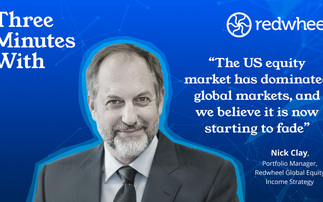Partner Insight: Abhishek Kumar, Sector Head, Emerging Markets, Fixed Income Beta Team at State Street Global Advisors, discusses the outlook for emerging markets in 2019 and the challenges for active managers in the sector - where just 3% of them outperformed their benchmarks
Q: Why should investors consider using passive exposure for emerging market debt (EMD)?
In the past, adopting an active management approach was perceived as the best way to invest in EMD based on various assumptions. For example, many investors thought indexed EMD would be too expensive to implement, and that because EMD is an inefficient market, active managers would be able to extract value. Moreover, an index would hold 'weak' countries that drag on performance, which active managers could theoretically avoid.
The reality is very different. EMD now offers much greater liquidity and diversity, and the majority of active managers fail to outperform their benchmarks in the long run. A study of the 30 largest active managers1 tracking the JPMorgan GBIEM Global Diversified Index highlights the performance concerns in the chart below. While some active managers outperform their benchmark, the majority have failed to do so over the longer term. In 2017, 37% of the funds in the universe did outperform the GBI-EM, but it was an exceptionally strong year for the asset class as a whole.
In 2018, only 3% of the active managers in the universe outperformed their benchmark1. In each of the five years of the study, less than 40% of the active managers outperformed. These results show us that underperformance is not the result of a single bad year or a one-off 'black swan' event but, rather, a consistent and persistent problem for active managers.
Q. How should an investor think about allocating across local and hard currency debt?
There is a place for both exposures in asset allocations. The characteristic profile of EM local and EM hard currency contrast in certain areas. For example, some investors find the currency diversification benefits of holding EM local market debt attractive. This is a key difference to hard currency, where bonds tend to be issued in US dollar.
Currency is a major driver of short-term EM local market debt performance, which differentiates it from hard currency.
Country exposures are another area where divergences can be seen. What you find is that hard currency has a higher allocation to so-called ‘frontier markets', which can be more sensitive to external global stress. To compensate, investors tend to be rewarded with a higher yield.
For example, the yield to maturity of the JPMorgan EMBI Global Diversified Index is now ~6.98% with a duration of 6.4yrs. In comparison, the Bloomberg Barclays US Corporate Bond Index has yield to maturity of 4.37% with a duration of 7.05 years. For some investors the trade-off between credit quality and yield pick-up is attractive.
Click here to read the full interview and an analysis of the EMD outlook in the exclusive Bond Compass Q1 2019 report
1 Morningstar Direct, State Street Global Advisors, as of 31December 2018 - The analysis is ran focusing on the net performance relative to the JP Morgan EM GBI Global Diversified index of the 30 largest Emerging Market Debt funds registered in Europe using the oldest and lowest (published) institutional share-class. The sample is the same for each calendar year. This universe represents circa 35bn US$ of assets under management. 2 JPMorgan Government Bond Index Emerging Markets Global 10% Cap 1% Floor Index.













